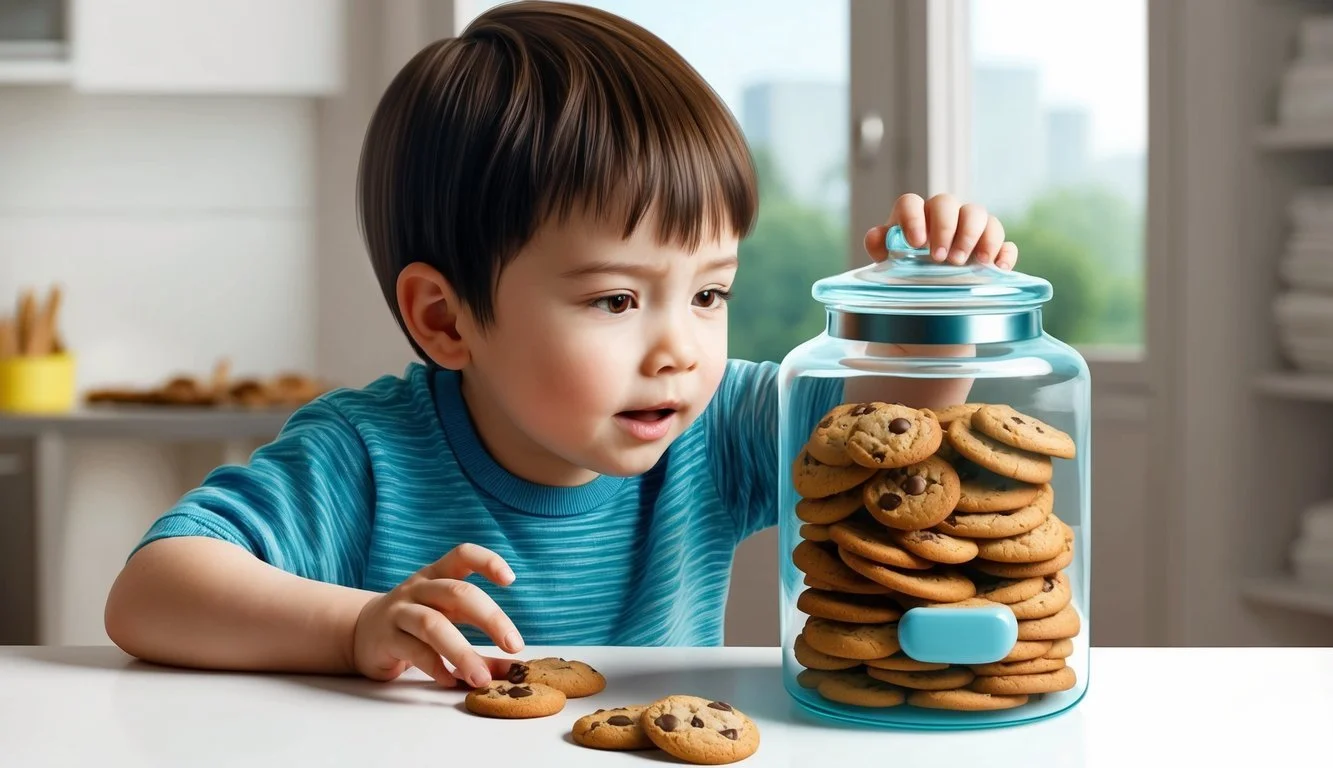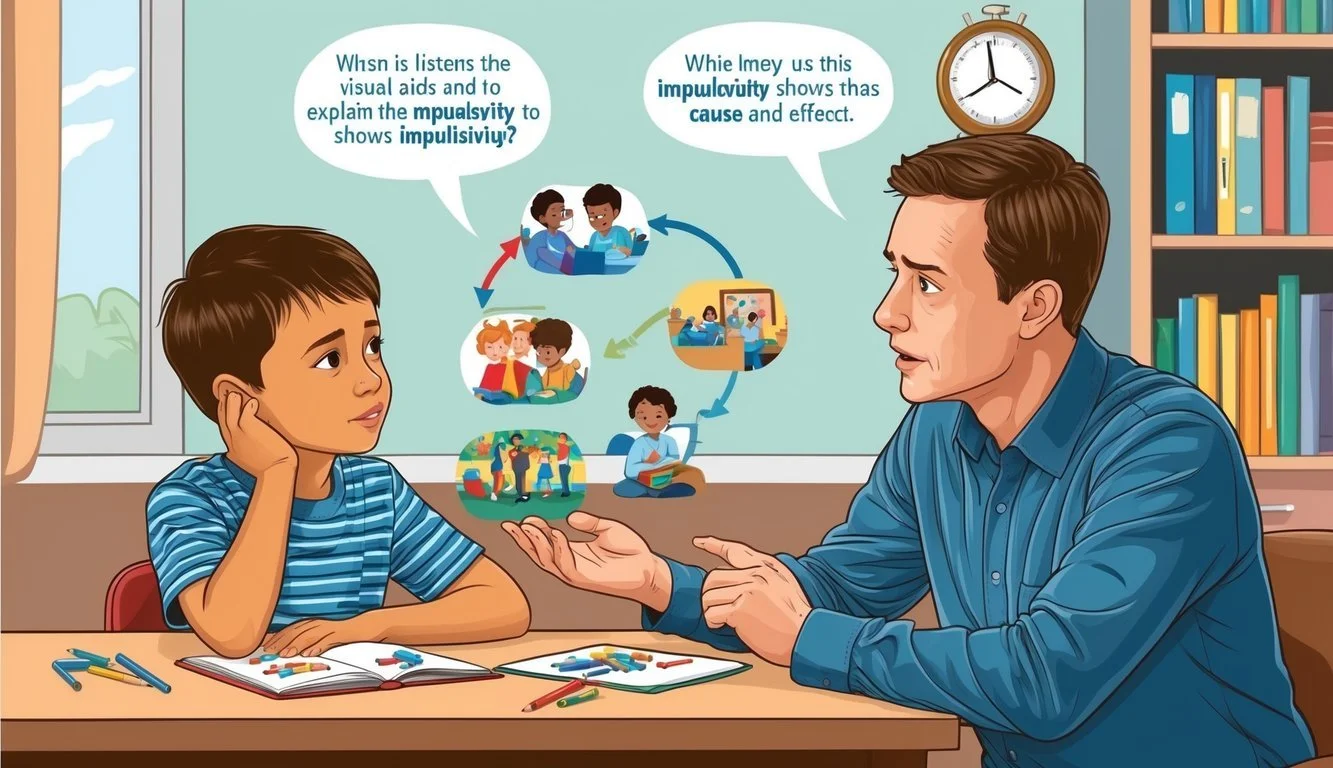Explaining Impulsivity to a Child: Simple Ways to Foster Understanding
Impulsivity in children manifests as quick, unplanned actions without considering consequences. It's a common behavior that can stem from various factors, including brain development, genetics, and environmental influences. Children may struggle to control their impulses, leading to interruptions, difficulty waiting their turn, or acting without thinking.
Teaching children about impulsivity involves explaining it in simple terms they can understand, such as comparing it to a car without brakes or a balloon that pops unexpectedly. Parents and caregivers can use relatable examples to help kids grasp the concept and recognize impulsive behaviors in themselves. This awareness is the first step in helping children develop better impulse control.
Addressing impulsivity requires patience, consistency, and positive reinforcement. Adults can model good decision-making, encourage reflection before action, and praise children when they demonstrate self-control. By providing a supportive environment and clear expectations, caregivers can guide children towards managing their impulses more effectively over time.
Understanding Impulsivity
Impulsivity in children involves acting without thinking and struggling to control immediate reactions. It can manifest in various ways and impact a child's behavior and development.
Defining Impulsivity
Impulsivity refers to quick, unplanned actions that occur without considering potential consequences. In children, it often appears as:
Blurting out answers before questions are finished
Interrupting conversations or activities
Difficulty waiting for turns
Acting without permission
These behaviors stem from underdeveloped self-control mechanisms in the brain. Children with impulsivity may struggle to stop and think before acting, leading to seemingly rash decisions or actions.
How It Affects Behavior
Impulsive behavior can significantly impact a child's daily life and interactions. It may result in:
Social challenges, such as difficulty maintaining friendships
Academic struggles, including trouble following instructions
Safety concerns due to risky actions
Emotional outbursts or inappropriate comments
Children with impulsivity often act on immediate urges without considering long-term effects. This can lead to misunderstandings, as others may perceive their actions as intentionally disruptive or rude.
Impulsivity can also affect a child's self-esteem and emotional well-being. Frequent reprimands or negative reactions from others may cause feelings of frustration or inadequacy.
Explaining to a Child
Talking to children about impulsivity requires simplicity and relatable examples. Clear communication helps kids understand and manage their impulses better.
Simple Language
Use basic words when discussing impulsivity with a child. Explain that impulses are sudden urges to do or say something without thinking first. Compare impulses to a car racing forward without brakes.
Describe self-control as the ability to pause and think before acting. Liken it to a stop sign that helps us make good choices. Emphasize that everyone has impulses, but learning to control them is an important skill.
Avoid complex terms. Instead of "impulsivity," say "acting quickly without thinking." Replace "consequences" with "what happens after."
Using Examples
Provide concrete examples to illustrate impulsivity and self-control. Describe a child grabbing a toy from a friend as acting on impulse. Contrast this with asking politely to share, which shows self-control.
Use familiar scenarios: rushing to cross the street versus looking both ways first. Highlight the difference between blurting out an answer in class and raising a hand to wait your turn.
Create a game where kids practice stopping and thinking before acting. Use traffic light colors: red for stop, yellow for think, green for act. This visual helps reinforce the concept of impulse control.
Impulsivity in Everyday Life
Impulsivity manifests in various ways throughout a child's daily activities. It can impact their interactions, decision-making, and safety in both home and school environments.
Recognizing Impulsive Actions
Impulsive behaviors often appear as quick, unplanned reactions without considering consequences. A child might blurt out answers in class before the teacher finishes asking a question. They may interrupt conversations or struggle to wait their turn in games or activities.
At home, an impulsive child might grab toys from siblings without asking or touch items in stores despite being told not to. They may also have difficulty sitting still during meals or while watching television.
Physical actions can be impulsive too. A child might run into the street without looking or climb structures that are unsafe. They may also act on sudden urges, like eating an entire bag of candy at once.
Potential Consequences
Impulsive actions can lead to various challenges for children. In social situations, they may have trouble making and keeping friends due to interrupting or not respecting personal boundaries.
Academic performance can suffer when a child rushes through assignments without reading instructions carefully. Impulsivity may result in careless mistakes or incomplete work.
Safety risks increase with impulsive behavior. A child might sustain injuries from acting without considering potential dangers. They could also face disciplinary action at school for disruptive behaviors.
Emotional consequences can include frustration and low self-esteem. Children may feel bad about their actions but struggle to control their impulses, leading to a cycle of negative feelings.
The Brain and Impulsivity
The brain plays a crucial role in regulating impulsive behaviors. Specific regions are responsible for impulse control, and these areas develop gradually as children grow older.
Brain Parts Involved
The prefrontal cortex is the primary area involved in impulse control. It acts as the brain's "impulse control center," helping regulate behavior and decision-making. This region works alongside other areas like the limbic system, which processes emotions and rewards.
The amygdala, part of the limbic system, can trigger quick reactions to stimuli. When functioning properly, the prefrontal cortex helps moderate these impulses. In children with ADHD, the connection between these areas may be less developed.
Development and Age
Brain development continues throughout childhood and adolescence. The prefrontal cortex is one of the last areas to fully mature, often not reaching full development until early adulthood. This explains why younger children tend to be more impulsive.
As children grow, their ability to control impulses typically improves. However, some individuals may experience delayed development in these areas. Children with ADHD, for example, may show slower maturation in regions responsible for impulse control.
Environmental factors and experiences also influence brain development. Consistent routines and clear expectations can help support the growth of impulse control skills in children.
Strategies to Manage Impulsivity
Effective strategies can help children develop better impulse control over time. These approaches focus on building self-awareness, establishing routines, and practicing self-regulation skills through consistent effort.
Techniques for Self-Control
Teaching children to pause and think before acting is crucial. The "stop and think" method encourages kids to evaluate potential consequences. Deep breathing exercises can help calm the mind and body when feeling impulsive urges.
Visual aids like traffic light systems provide concrete reminders:
Red: Stop and take a breath
Yellow: Think about choices and consequences
Green: Choose the best action
Reward charts can reinforce positive behaviors. Children earn stickers or points for demonstrating self-control, which can be exchanged for small prizes or privileges.
Role-playing scenarios allow kids to practice appropriate responses in a safe environment. This builds confidence in handling real-world situations.
The Role of Routine
Consistent daily schedules provide structure and reduce uncertainty, which can trigger impulsive behaviors. Clear expectations help children feel more secure and in control.
Visual schedules using pictures or charts outline the day's activities. This helps kids anticipate transitions and prepare mentally for what's next.
Establishing simple rules and consequences creates boundaries. Post these in visible locations as reminders. Be sure to explain the reasoning behind rules calmly.
Incorporate regular "brain breaks" into the routine. Short periods of physical activity or relaxation can help reset focus and reduce impulsive urges.
Practice and Patience
Developing impulse control is a gradual process that requires ongoing practice and reinforcement. Celebrate small victories and improvements along the way.
Mindfulness activities like guided imagery or simple meditation teach children to observe their thoughts without immediately acting on them. Start with short sessions and gradually increase duration.
Games that require turn-taking, such as board games or Simon Says, offer fun opportunities to practice waiting and self-regulation. Praise efforts to follow rules and wait patiently.
Model self-control in your own behavior. Narrate your thought process when faced with frustrating situations to demonstrate problem-solving skills.
Provide positive feedback when children demonstrate self-control, even in small ways. This encourages them to repeat the behavior in the future.
Helping Others Understand
Explaining impulsivity to friends, family, and other children can foster empathy and support. Clear communication and practical strategies help create a more understanding environment for impulsive children.
Discussing with Friends and Family
Open conversations about impulsivity help build a support network. Explain that impulsivity is not willful misbehavior but a challenge in self-regulation. Share specific examples of how impulsivity manifests in the child's behavior.
Provide resources like articles or books to deepen others' understanding. Encourage questions and address concerns patiently.
Highlight the child's strengths and positive qualities to maintain a balanced perspective. Discuss strategies that work at home and invite suggestions for consistent approaches across different settings.
Supporting a Child with Impulsivity
Teach children about impulsivity using age-appropriate language and examples. Explain that everyone has impulses, but some find it harder to control them.
Use visual aids like the "impulse control traffic light" to illustrate the process of stopping, thinking, and choosing actions. Practice role-playing scenarios to demonstrate impulse control in action.
Encourage empathy by asking children to imagine how it feels to struggle with impulses. Praise efforts to show understanding and support towards impulsive peers.
Discuss ways to be a good friend to someone with impulsivity, such as offering gentle reminders or redirecting to calmer activities when needed.
Conclusion
Explaining impulsivity to a child requires patience and understanding. By using age-appropriate language and relatable examples, parents can help children grasp this complex concept.
Emphasizing the importance of thinking before acting is key. Encourage children to pause and consider consequences, even if just for a moment.
Positive reinforcement plays a crucial role. Praise children when they demonstrate self-control and make thoughtful choices.
Consistency in approach is essential. Parents and caregivers should maintain clear expectations and consequences for impulsive behaviors.
Remember that managing impulsivity is a skill that develops over time. With support and guidance, children can learn to regulate their impulses more effectively.
Teaching impulse control techniques, like deep breathing or counting to ten, can provide children with practical tools to use in challenging situations.
By fostering open communication, children feel more comfortable discussing their struggles with impulsivity. This creates opportunities for problem-solving together.
Ultimately, helping children understand and manage their impulsive tendencies sets them up for success in various aspects of life, from academics to social interactions.



